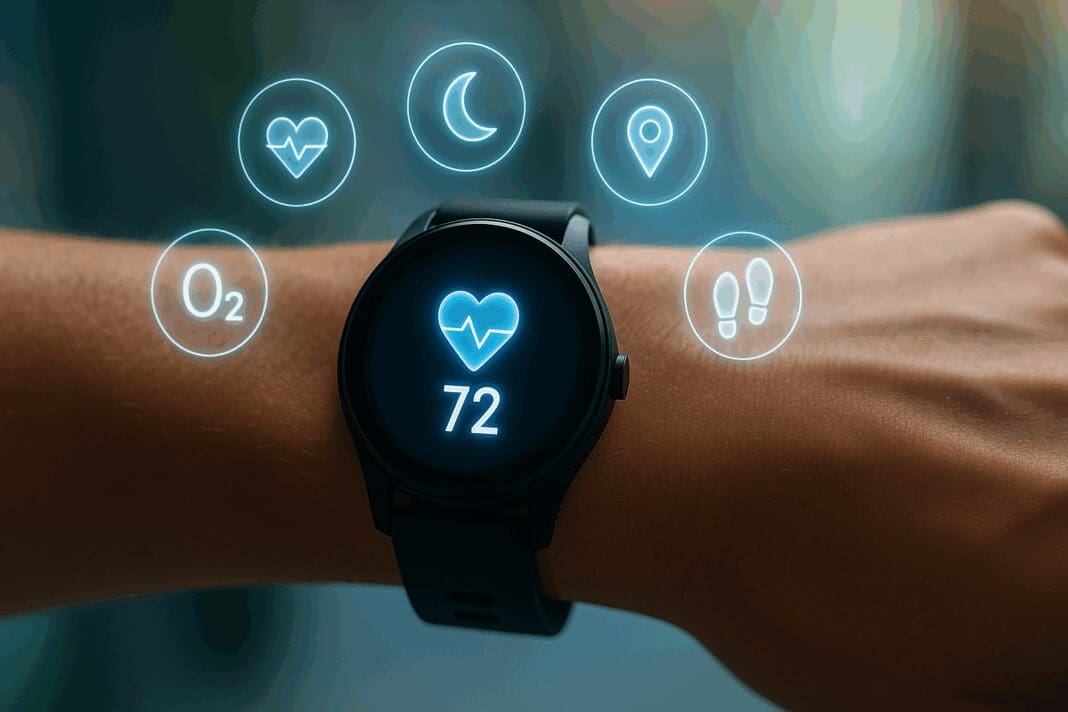In today’s technology-driven fitness culture, selecting the best fitness watch is more than a matter of fashion—it’s a strategic health decision. With wearable health technology advancing rapidly, fitness watches have evolved into comprehensive wellness companions, offering insights into heart rate variability, sleep quality, VO₂ max, blood oxygen saturation, and even stress levels. Whether you’re aiming to lose weight, improve cardiovascular endurance, or simply increase daily activity, understanding what constitutes the best fitness watch for your goals is essential. These devices go far beyond step-counting, and the right one can offer real-time feedback that empowers better choices, optimizes workouts, and deepens awareness of your personal health patterns.
You may also like: How to Read a Nutrition Label: The Essential Guide to Smarter, Healthier Eating
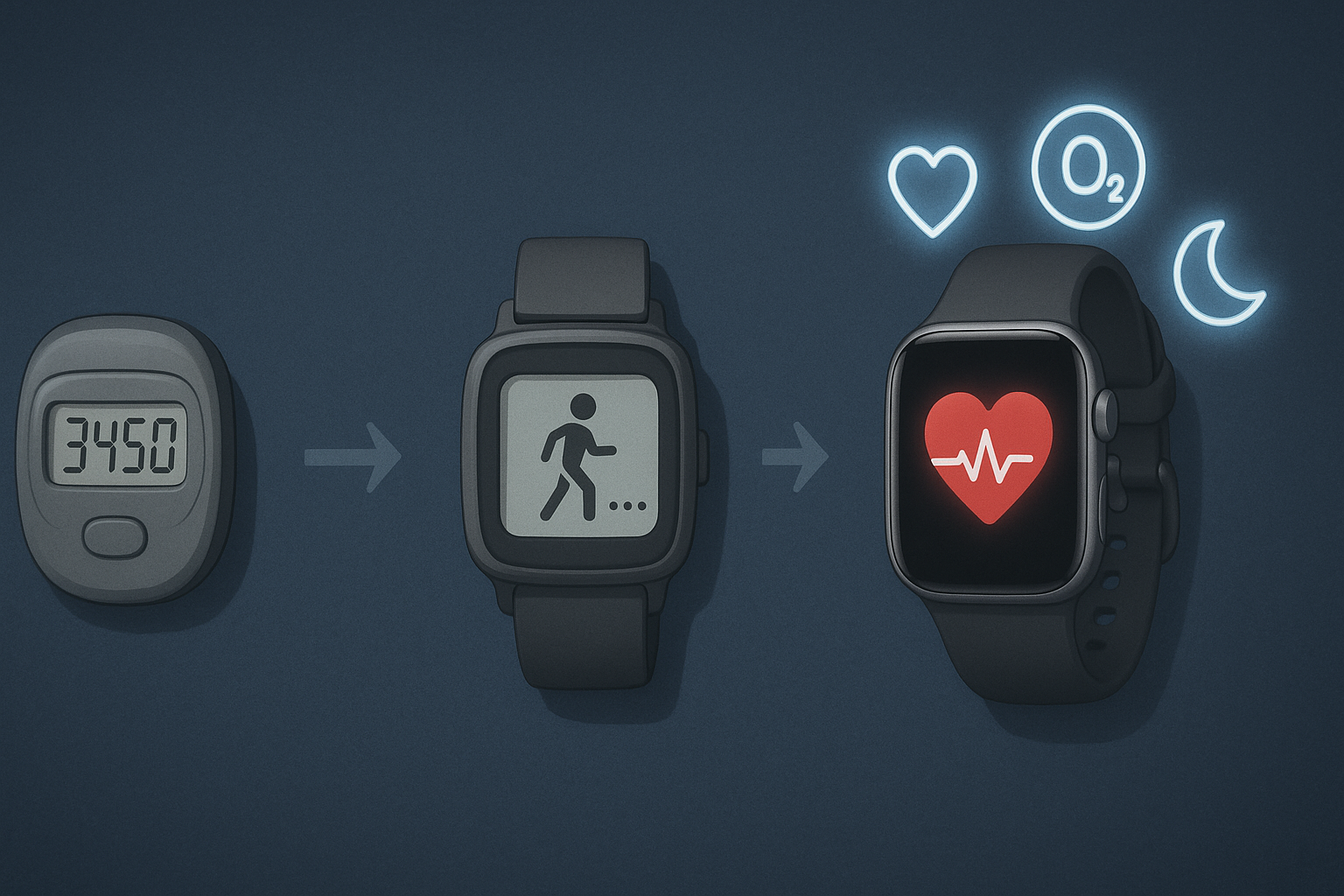
The Evolution of Fitness Watches: From Step Counters to Health Monitors
The journey of fitness watches has been nothing short of transformative. Initially, the market was saturated with basic pedometers that counted steps with modest accuracy. These early devices, while groundbreaking at the time, provided only a superficial glimpse into physical activity. They lacked contextual understanding and were primarily used for motivational purposes rather than accurate tracking or health diagnostics.
However, as sensor technology improved and consumer interest in health data surged, fitness watches began integrating more sophisticated features. GPS tracking was one of the first major leaps, enabling users to record running, cycling, and hiking routes with precision. Heart rate monitoring followed soon after, initially delivered through chest straps but eventually integrated directly into wristbands through optical sensors.
The modern fitness watch is now a hybrid of fitness tracker and health monitor, merging biometric feedback with AI-powered insights. These devices now offer ECG readings, continuous stress tracking, and even menstrual cycle prediction. Additionally, the best wearable health trackers now incorporate environmental data, such as UV exposure and air quality, to present a holistic picture of well-being. With this evolution, users are no longer limited to steps or calories—they can monitor how their body responds to stress, sleep, and exertion in a deeply personalized way.
Understanding Your Health Goals Before You Buy
Before diving into the comparison of different fitness watches, it’s crucial to reflect on your specific health goals. Are you training for a marathon or simply trying to be more active during your workday? Do you need a device that can handle intense workouts, or are you more concerned with sleep and recovery metrics? Understanding your primary objectives will streamline the selection process and ensure that you choose a device with features aligned to your needs.
If you’re looking to increase your daily movement, for example, the best fitness tracker for steps might be sufficient. These trackers offer precise step counting, hourly movement reminders, and idle alerts. On the other hand, if you’re working toward peak physical performance or managing a chronic health condition, you’ll likely benefit more from advanced metrics such as heart rate variability, SpO₂ monitoring, or even an ECG sensor.
Goal setting also helps determine whether smartwatch capabilities such as on-screen workouts, music storage, or cellular connectivity are important. Some fitness watches double as productivity tools, allowing you to answer calls, respond to messages, or use voice assistants on the go. Others are focused entirely on health and offer minimal smart features. The ideal choice varies significantly depending on whether your goal is holistic wellness, competitive performance, or daily accountability.
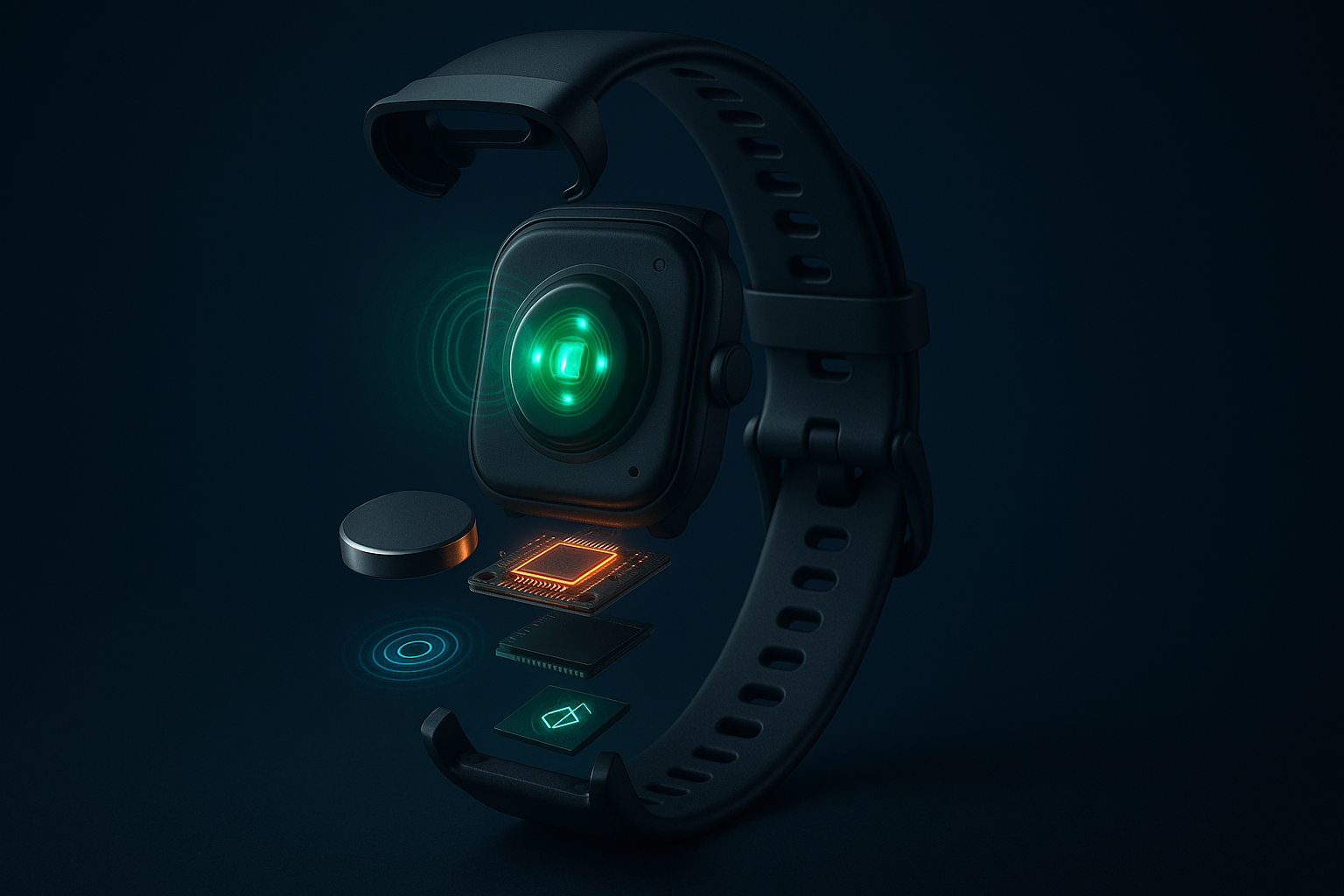
Key Features That Define the Best Fitness Watch
When evaluating the best fitness watch, one of the first features to consider is sensor accuracy. At the core of every great wearable is a set of reliable sensors—accelerometers, gyroscopes, heart rate monitors, and barometric altimeters—that translate physical activity into usable data. Precision is paramount, especially if you’re monitoring subtle changes in metrics like heart rate during interval training or sleep cycles during rest periods.
Battery life is another critical factor. Fitness watches range from devices that require daily charging to models that last up to three weeks on a single charge. Long battery life is especially important for outdoor athletes, such as ultramarathon runners or hikers, who rely on continuous GPS and heart rate data without access to power outlets. A best-in-class wearable will balance advanced features with efficient energy consumption.
Equally important are the algorithms and companion apps that interpret your data. Many wearables now include personalized insights, adaptive goal recommendations, and wellness scoring systems that use machine learning to provide tailored feedback. These interpretations can help users identify overtraining, stress accumulation, or early signs of illness. In essence, the watch not only records your health metrics—it also acts as a personal health coach.
Water resistance and durability also deserve attention, particularly for swimmers, triathletes, or individuals who work in rugged environments. Watches rated at 5 ATM or higher can handle swimming and showering, while military-grade durability certifications ensure survival through extreme temperatures, dust, and shock.
Comparing Operating Systems and Ecosystems
When selecting a fitness watch, the operating system and its corresponding ecosystem of apps can greatly influence your user experience. Devices like the Apple Watch run on watchOS and integrate seamlessly with the broader Apple ecosystem, offering features like Siri, Apple Music, and direct syncing with the Apple Health app. This tight integration makes it easier to centralize health data and combine inputs from multiple apps and devices.
On the Android side, Google’s Wear OS and Samsung’s proprietary system (now partially merged with Wear OS) offer similar conveniences. These watches allow access to Google Fit, third-party fitness apps, and integrations with Google Assistant. Compatibility is key—using an Apple Watch with an Android phone, for example, results in feature loss and a less cohesive experience.
Garmin and Fitbit, while not primarily known for their app stores, offer robust health and fitness ecosystems with proprietary platforms like Garmin Connect and Fitbit Premium. These ecosystems focus more heavily on health analytics than app variety. Their operating systems are often optimized for performance and battery efficiency rather than app diversity.
Ultimately, the best fitness watch for you may depend as much on its operating system as on its hardware. A watch with a great sensor suite may fall short if it lacks a strong ecosystem for tracking progress, analyzing results, or setting goals across platforms. Consider the full software experience, not just the watch itself.
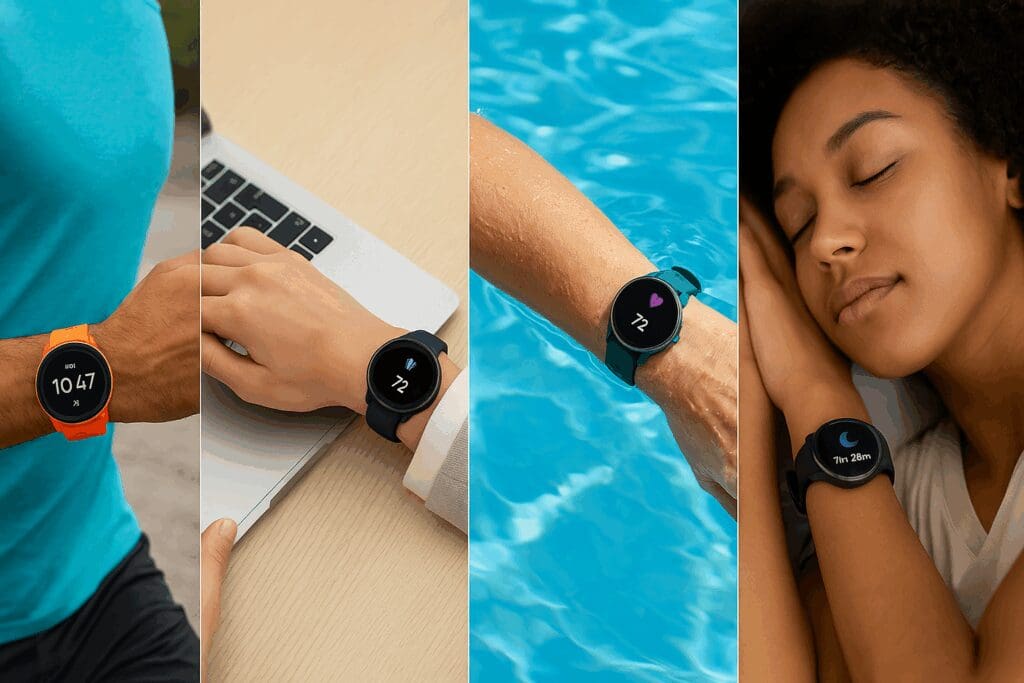
Best Fitness Watch Models for Different Needs
Choosing among the top fitness watch models can feel overwhelming due to the sheer variety of options available. However, certain brands and devices consistently rise to the top depending on specific user goals. For step counting and daily activity tracking, models like the Fitbit Charge or Inspire series continue to dominate. Their intuitive interfaces and reliable step detection make them contenders for the best fitness tracker for steps.
For more comprehensive health tracking, watches like the Garmin Forerunner or Fenix series offer elite-level monitoring for serious athletes. These devices provide advanced insights like training load, anaerobic threshold, and recovery time, often used by endurance athletes and competitive runners.
If smart features are as important as fitness tracking, the Apple Watch Series 9 and Ultra stand out. These devices merge a polished smartwatch experience with robust health monitoring, including ECG, fall detection, and blood oxygen monitoring. They’re ideal for users who want an all-in-one device for both productivity and wellness.
Samsung’s Galaxy Watch lineup also offers an excellent balance of fitness and smartwatch features, with the Galaxy Watch 6 providing detailed body composition analysis and integration with Samsung Health. These devices are particularly suitable for Android users who want smartwatch aesthetics without sacrificing health data quality.
Meanwhile, Amazfit and Huawei wearables provide budget-friendly alternatives with surprisingly strong health monitoring capabilities. These models are perfect for users who want high performance at a fraction of the cost, though app support and software updates can be more limited.
Metrics That Matter: What to Look for Beyond Steps
While step counting remains a cornerstone of wearable fitness, today’s best fitness watch models provide a diverse array of advanced metrics. Continuous heart rate monitoring is now a baseline feature, but high-end models go further, offering resting heart rate trends and heart rate zone breakdowns that inform workout intensity and recovery efficiency.
Sleep tracking has also become a major selling point. Sophisticated sleep algorithms now differentiate between light, deep, and REM sleep stages, using motion and heart rate variability to assess restfulness. Some devices even provide sleep scores or readiness indices, helping users determine whether to push hard or rest on a given day.
Another important metric is blood oxygen saturation (SpO₂), which has gained prominence amid rising public awareness of respiratory health. Low SpO₂ levels may indicate sleep apnea, respiratory distress, or insufficient altitude acclimatization. Watches equipped with pulse oximeters allow users to monitor oxygen levels passively or during sleep.
More advanced wearables now incorporate skin temperature sensors, electrodermal activity, and menstrual cycle tracking. These data points offer a broader understanding of wellness and may help users detect subtle changes related to illness, ovulation, or hormonal fluctuations. Ultimately, the best wearable health tracker is one that offers insights beyond basic activity, supporting a deeper connection with your body.

The Role of GPS, Altitude, and Environment Tracking
For users focused on outdoor training or performance sports, environmental metrics are essential. Built-in GPS is a must-have for accurately tracking routes, distances, and elevation gain. Multi-band GPS capabilities, now found in higher-end Garmin, Coros, and Apple models, provide exceptional accuracy even in dense urban areas or wooded trails.
Barometric altimeters enhance elevation tracking, particularly for hikers, climbers, and cyclists. These sensors offer real-time elevation gain and loss, which is crucial for calculating effort and performance on hilly terrain. Watches like the Garmin Enduro or Suunto 9 Baro excel in these conditions, offering maps, waypoints, and turn-by-turn navigation.
Environmental tracking goes further with devices that monitor UV exposure, ambient temperature, and air quality. These features can be especially valuable for individuals with respiratory conditions or those training in extreme climates. Exposure data can help athletes make safer decisions, while air quality alerts can protect users from overexerting themselves during pollution spikes or wildfire smoke.
Choosing a fitness watch with these environmental capabilities not only enhances your training data—it can also improve safety and performance. Athletes can adapt their pace or hydration based on temperature or use sunrise/sunset features to plan routes more effectively.

How Fitness Watches Enhance Motivation and Accountability
Beyond metrics and performance, one of the most valuable roles of the best fitness watch is its ability to promote consistency through motivation and accountability. Behavioral psychology shows that small prompts—like reminders to stand, congratulatory vibrations, or progress rings—can reinforce healthy habits and foster long-term lifestyle changes.
Most modern wearables include goal-setting features, such as step goals, exercise streaks, or caloric burn targets. These personalized benchmarks give users a tangible sense of progress. Over time, users often develop intrinsic motivation as they begin to associate daily movement or heart-pumping workouts with the visual and tactile feedback of their device.
Gamification plays a powerful role as well. Many platforms incorporate badges, challenges, and virtual competitions with friends or community members. These elements can turn solo fitness routines into engaging social experiences, encouraging users to maintain momentum even when motivation wanes.
Moreover, data sharing options allow users to send activity summaries to healthcare providers, coaches, or accountability partners. This connectivity increases transparency and offers valuable external validation. In many ways, the best wearable health tracker acts not just as a mirror of your effort, but as a subtle, ever-present teammate cheering you on.
Fitness Watches and Mental Health: An Overlooked Benefit
While most users associate fitness watches with physical health, their role in mental health is expanding. Devices now offer guided breathing exercises, mindfulness reminders, and stress tracking features based on heart rate variability and electrodermal activity. These subtle but powerful tools help users become more aware of their emotional and physiological states.
The ability to track stress levels throughout the day, often displayed as a continuous score or colored bar graph, offers actionable insight into triggers and recovery patterns. Over time, users can learn which activities, environments, or routines elevate their stress and which ones support relaxation.
Sleep quality tracking also ties directly into mental health. Poor sleep has been linked to anxiety, depression, and decreased cognitive performance. Fitness watches that monitor sleep cycles can help users make informed changes to their nighttime routines, supporting emotional resilience and clarity.
In some cases, wearables can even flag mental health red flags. For instance, consistently elevated heart rates, sudden drops in daily activity, or disrupted sleep patterns may signal the need for professional support. By providing this early data, fitness watches can serve as quiet sentinels in the broader landscape of health and wellness.
Making Sense of Data: From Numbers to Action
Collecting data is only half the equation; interpreting it meaningfully is where the real value lies. Companion apps like Apple Health, Garmin Connect, Fitbit Premium, and Samsung Health all provide dashboards that contextualize metrics into trends, charts, and goal summaries. These platforms help translate raw numbers into actionable insight.
For example, understanding your heart rate zones during cardio workouts can reveal whether you’re maximizing aerobic conditioning or pushing too hard into anaerobic territory. Similarly, noticing a pattern of poor sleep after evening workouts might prompt you to shift your training schedule to mornings.
Some platforms also offer insights powered by machine learning. These include readiness scores, recovery advisors, or personalized workout suggestions. By combining sleep, heart rate, and stress data, these recommendations offer a holistic view of your physiological state and suggest adjustments to optimize performance and health.
Importantly, users must remain cautious not to over-interpret or obsess over every fluctuation. Fitness watches are tools—not oracles—and while they provide valuable guidance, they work best when combined with self-awareness and common sense. The most empowering use of a fitness tracker is one that supports intuition and agency, rather than replacing them.
Choosing the Best Fitness Watch for Everyday Use and Lifestyle Integration
For many users, the best fitness watch is not necessarily the most advanced—it’s the one that fits seamlessly into everyday life. A good fitness wearable should support your routine, not complicate it. For instance, if you’re frequently in meetings or travel often, features like smart notifications, calendar syncing, and fast charging may take precedence over elite-level training metrics.
The design and comfort of the watch are also critical considerations. A sleek, lightweight model with interchangeable bands may be more appropriate for daily wear than a bulky, feature-rich model that feels cumbersome or conspicuous. Water resistance, scratch-proof displays, and long battery life further enhance everyday usability. For users who prioritize aesthetics, brands like Withings and Fitbit Luxe offer stylish options that resemble traditional timepieces but still deliver health tracking under the hood.
Moreover, lifestyle integration also includes how well your watch communicates with other devices in your ecosystem. If you use a particular brand of smartphone, fitness app, or health platform, selecting a fitness watch that syncs natively with those tools will greatly improve your overall experience. Seamless integration not only simplifies the setup process but ensures consistency and accuracy across all your health data.
Ultimately, lifestyle alignment should never be underestimated. A fitness watch that complements your wardrobe, syncs easily with your apps, and fits your daily rhythm is more likely to be worn consistently—and that consistency is what drives results.
How to Avoid Common Mistakes When Buying a Fitness Watch
Despite the wealth of options on the market, many buyers make preventable mistakes when choosing a fitness watch. One of the most frequent errors is overbuying—selecting a high-end model with features you don’t actually need. For someone simply tracking steps and sleep, a $500 multisport GPS watch may be overkill. It’s important to match your purchase to your actual habits, not your aspirational self-image.
On the other end of the spectrum, underbuying can also be problematic. Choosing a budget model that lacks essential features may lead to frustration and abandonment. For example, if accurate heart rate tracking during workouts is important, a low-tier tracker with poor sensor quality will deliver unreliable results. Over time, this can demotivate users and distort progress tracking.
Another common oversight is ignoring compatibility. Some watches are optimized for specific operating systems and lose functionality when paired with unsupported phones. Before purchasing, confirm whether the fitness watch is compatible with your smartphone, preferred apps, and health platforms.
Finally, many users overlook the importance of user interface and app design. Even the most accurate fitness watch can feel unusable if its app is cluttered, confusing, or difficult to navigate. Before committing to a device, explore reviews of the companion app and consider downloading it to assess user experience and features.
Avoiding these pitfalls requires thoughtful reflection, not just on your fitness goals but also on how you interact with technology and what motivates you to stay consistent. The best wearable health tracker is the one you’ll use daily with enjoyment and ease.
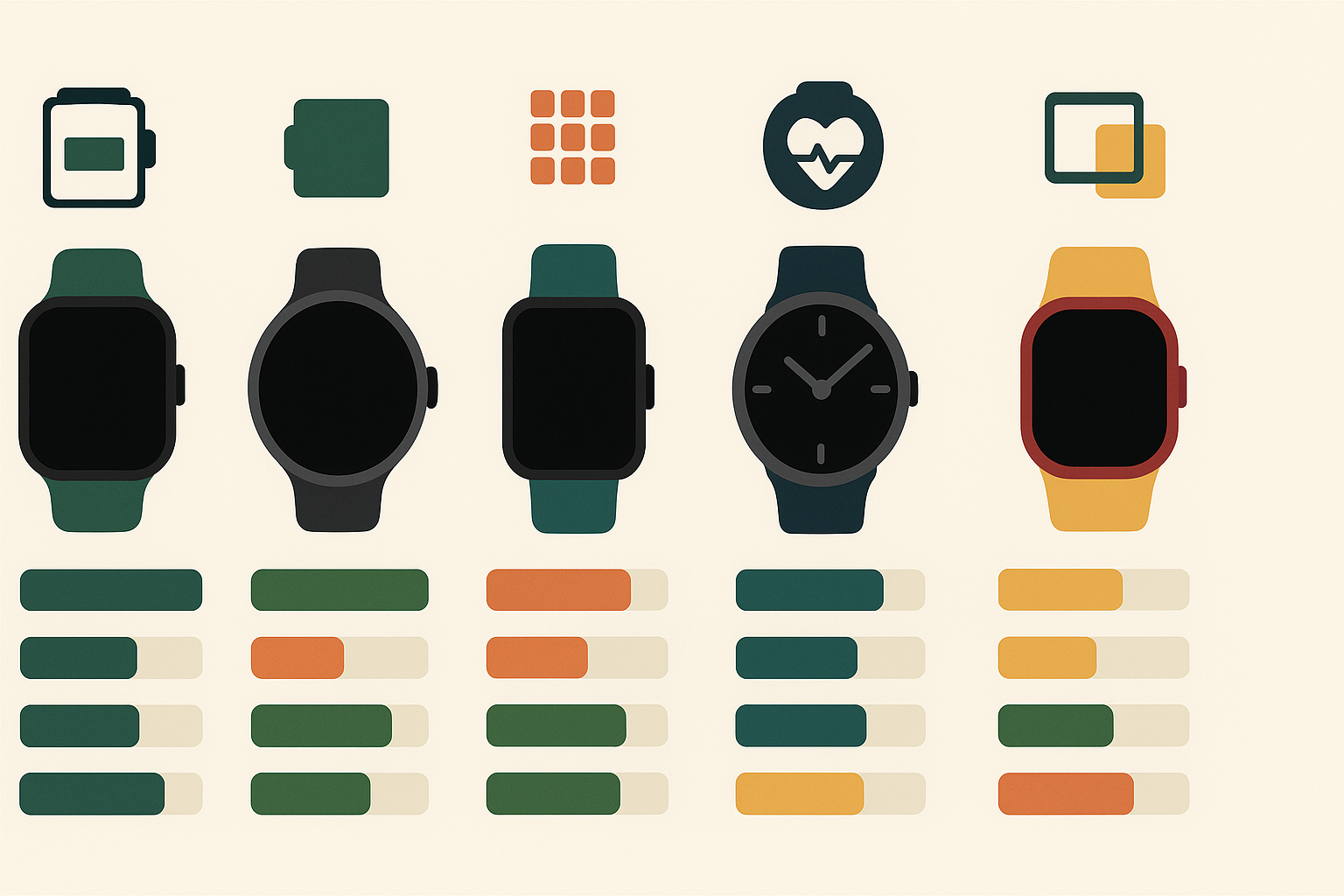
Vergleich Fitness Tracker: Evaluating Brands Head-to-Head
When evaluating fitness trackers head-to-head—a process often referred to as “vergleich fitness tracker” in German—it becomes clear that no single brand dominates every category. Each major player brings unique strengths, and the best choice often depends on the user’s priorities and ecosystem loyalty.
Garmin, for instance, is widely lauded for its sport-specific data accuracy, long battery life, and rugged durability. It’s the gold standard for serious athletes, especially runners, cyclists, and triathletes. Garmin’s ecosystem is also one of the most feature-rich, with deep data analytics and route planning tools that go well beyond the basics.
Apple, on the other hand, excels in ecosystem integration and user interface design. Its health monitoring features—especially ECG and blood oxygen—are clinically backed and constantly updated. However, the Apple Watch has comparatively shorter battery life, which can be a limitation for endurance athletes or sleep tracking enthusiasts.
Fitbit is ideal for users focused on general wellness, simplicity, and lifestyle tracking. It offers one of the best user-friendly experiences for people just starting their fitness journey. Fitbit Premium, its subscription service, offers guided workouts, stress management tools, and health reports that provide a broad wellness view.
Samsung has carved a niche for itself by offering a compelling mix of smart features and fitness tracking, particularly for Android users. With sensors that monitor body composition and blood pressure (in select regions), Samsung is pushing the envelope in integrated health metrics.
Meanwhile, lesser-known brands like Coros and Amazfit are making waves with impressive battery life, affordability, and sport-specific features. These watches may lack polished app ecosystems but deliver tremendous value for users focused on core metrics.
This kind of vergleich fitness tracker comparison reveals that the “best” fitness watch isn’t a universal title—it’s relative to the user’s needs, budget, and lifestyle preferences. A thorough comparison will take into account not only specs but also ecosystem support, app design, and long-term software updates.
The Future of Wearable Health Technology
Wearable fitness technology is still in its adolescence, and the future promises even greater integration of health data, artificial intelligence, and preventative medicine. The next generation of fitness watches will likely include continuous glucose monitoring, hydration tracking, and perhaps even real-time blood pressure readings—features that could revolutionize chronic disease management and preventative health.
AI-powered health coaching is already beginning to take shape. Imagine a fitness watch that doesn’t just track your steps but learns your behavior, understands your rhythms, and makes proactive suggestions to optimize your schedule, sleep, and recovery. These tools will evolve into intelligent health companions that not only interpret data but anticipate needs and intervene early.
We’re also seeing more integration between wearables and medical systems. Partnerships between wearable manufacturers and healthcare providers could enable fitness watches to serve as remote patient monitoring tools, especially for those with heart disease, diabetes, or respiratory issues. Early detection through wearables could reduce hospital visits and improve patient outcomes.
Privacy and data security will remain critical as more sensitive biometric data is collected. The best fitness watch of the future will not only track your metrics but ensure your personal health information is encrypted, anonymized, and stored with integrity.
As the line between consumer tech and medical-grade diagnostics continues to blur, users must be prepared to engage with this technology not just as passive wearers, but as informed participants in their own health journey.
Frequently Asked Questions (FAQ) About Choosing the Best Fitness Watch for Holistic Health Tracking
1. How does the best fitness watch help support mental well-being beyond physical tracking?
While many users associate the best fitness watch with step counting and heart rate monitoring, newer models also integrate features aimed at enhancing mental health. Some watches now offer guided breathing sessions, stress monitoring, and even detect variations in heart rate variability (HRV), a known indicator of emotional stress and cognitive load. These tools allow wearers to proactively manage anxiety or burnout in real time. Longitudinal HRV data, when combined with sleep trends and activity levels, creates a more nuanced wellness profile that helps users understand how emotional and physical stressors interact. By including mental health tracking, the best wearable health tracker evolves into a holistic health companion.
2. What are some overlooked lifestyle benefits of using the best fitness tracker for steps?
Using the best fitness tracker for steps goes far beyond tallying your daily totals—it can subtly reshape your daily behavior. For example, consistent use often encourages better time management, as users become aware of sedentary gaps and restructure their schedules to include more movement. Families and couples also report increased bonding when using synchronized step challenges, fostering accountability and shared goals. Moreover, these devices support the psychological principle of “habit stacking,” where pairing walking with another habit (like listening to an audiobook) reinforces both. This makes the best fitness tracker for steps a tool not just for health, but for enhanced life satisfaction.
3. How is data accuracy evolving in the best wearable health tracker market?
Accuracy remains a key concern in the competitive race to produce the best wearable health tracker. Manufacturers are now incorporating more advanced multi-sensor arrays—combining accelerometers with optical sensors, barometers, and electrodermal activity readers—to increase reliability across various conditions. Some premium models cross-reference sensor data with AI-driven context-aware algorithms, resulting in smarter detection of actual physical exertion vs. incidental motion. These innovations make metrics like VO2 max, respiratory rate, and sleep phases more precise. As the best wearable health tracker becomes increasingly sophisticated, it plays a bigger role in personalized health optimization, even rivaling clinical-grade devices for certain metrics.
4. Why is comparability important in a vergleich fitness tracker analysis?
A strong vergleich fitness tracker (fitness tracker comparison) is essential for discerning shoppers who want more than just brand hype. Different models prioritize different features—some excel at step tracking and GPS accuracy, while others offer advanced biometrics like skin temperature or blood oxygen saturation. The best comparisons highlight these nuances, allowing buyers to match device strengths to their unique fitness goals. For instance, trail runners may favor altimeter precision, while office workers may prioritize sedentary alerts and stress feedback. By using a vergleich fitness tracker wisely, users can make smarter purchases that align with lifestyle, not just price.
5. How do modern fitness watches support long-term health behavior change?
The best fitness watch goes beyond short-term goals like daily step counts—it acts as a long-term behavior modification coach. Through gamified features like streaks, achievement badges, and nudges, these watches build psychological reinforcement loops that enhance consistency. Over time, users internalize new norms for activity, rest, and stress management. Many models also offer monthly performance summaries, helping users identify patterns and plateaus, which fosters sustained growth rather than burnout. This strategic data feedback loop, unique to the best fitness watch ecosystem, transforms raw numbers into actionable insights for lifelong wellness.
6. Can the best fitness tracker for steps be helpful for people with chronic illnesses?
Absolutely. The best fitness tracker for steps is becoming an essential ally in chronic disease management. Individuals managing diabetes, arthritis, or cardiovascular disease benefit from real-time feedback on their mobility, which aids in pacing activity and preventing symptom flare-ups. Some fitness trackers even integrate with health apps that allow remote monitoring by healthcare providers, bridging the gap between patient and clinician. Moreover, goal customization in step tracking allows users to adapt metrics to reflect their condition—whether it’s a 2,000-step goal post-surgery or a 10,000-step recovery target. The best fitness tracker for steps provides autonomy and confidence to those navigating complex health journeys.
7. How does the best wearable health tracker promote sleep quality improvement?
Many consumers underestimate how effectively the best wearable health tracker can promote better sleep habits. These trackers use motion sensors, heart rate variability, and sometimes pulse oximetry to gauge sleep stages with increasing precision. What sets advanced models apart is the integration of sleep coaching features, which suggest tailored bedtime routines, identify sleep disruptors, and even recommend optimal wake-up windows based on circadian rhythms. Long-term trend analysis helps users identify correlations between caffeine intake, stress levels, and sleep quality. In this way, the best wearable health tracker evolves into a nightly recovery coach—not just a morning step counter.
8. What future technologies may redefine what counts as the best fitness watch?
The next generation of contenders for the title of best fitness watch may introduce wearable blood glucose monitoring, sweat-based electrolyte tracking, or even non-invasive hydration sensors. Integration with augmented reality (AR) platforms could allow for real-time exercise form correction or guided meditations in immersive environments. AI-driven personalization will grow, enabling the watch to autonomously adjust goals based on user mood, sleep, and menstrual cycle data. As privacy frameworks improve, these features will remain secure while offering medical-grade insights. These innovations signal that the best fitness watch of tomorrow may feel more like a live-in wellness consultant than a gadget.
9. How do cultural differences influence vergleich fitness tracker choices?
Cultural norms and priorities deeply shape consumer preferences in the vergleich fitness tracker landscape. For example, Western users often prioritize calorie burn and cardiovascular efficiency, while East Asian markets may place higher value on sleep quality and stress monitoring. Language support, app interface design, and social connectivity features also influence choices globally. In Germany, where “vergleich fitness tracker” is a popular search term, consumers tend to favor precise engineering and data transparency over flashy features. Understanding these nuances is essential for global brands aiming to design the best fitness watch for diverse markets.
10. Why do some experts recommend owning more than one fitness tracker?
While unconventional, using more than one device can actually enhance the accuracy and context of your health data. For example, a user might wear the best fitness tracker for steps during the day to monitor movement and another device optimized for sleep tracking at night. Some specialized devices excel in specific domains—like a chest strap for precise heart rate monitoring during intense training, alongside a wrist-based best fitness watch for general use. This modular approach helps users benefit from the best of each ecosystem. When synchronized properly, multiple devices can offer a fuller, more nuanced picture of physical and psychological health.
Final Thoughts: Finding the Best Fitness Watch for Your Personal Wellness Journey
Choosing the best fitness watch is ultimately a deeply personal decision—one that blends technology, lifestyle, and wellness philosophy into a single wearable companion. The right watch will do more than just count your steps or log your runs. It will become a tool for self-awareness, a coach for improvement, and a silent partner in your ongoing pursuit of health and vitality.
Whether your priority is finding the best fitness tracker for steps, a stylish and smart daily companion, or a rugged wearable built for ultramarathons and alpine adventures, there is a fitness watch tailored to your goals. Seek out a device that supports your needs, integrates into your life, and motivates you to stay consistent. Don’t be swayed by flashy features you won’t use—focus on long-term engagement, reliable data, and meaningful insights.
Remember that wearable technology is only as powerful as your willingness to use it with intention. A step goal met every day, a heart rate curve understood, or a night of restful sleep tracked—these small victories add up over time. By aligning your goals, lifestyle, and budget with the features that matter most, you’ll not only find the best wearable health tracker—you’ll forge a deeper connection with your health.
In the end, your fitness journey is not defined by how many metrics you can measure but by how meaningfully you respond to them. Let your fitness watch serve as a guide—not a dictator—and you’ll be well on your way to achieving the health and vitality you deserve.
Further Reading:
How Apple Watch, Fitbit, Garmin, Oura, and Whoop Compare on Measuring HRV
The Best Fitness Trackers and Watches for Everyone
The Best Fitness Trackers, Tested While Training, Running And Swimming

